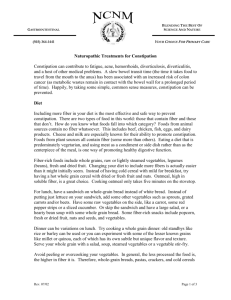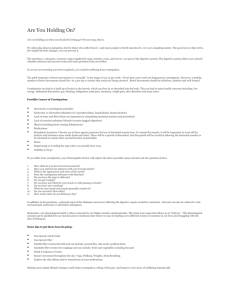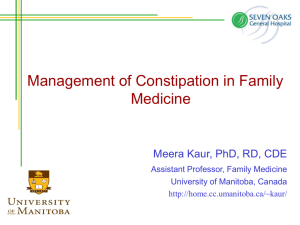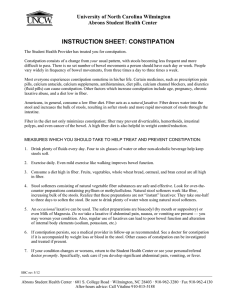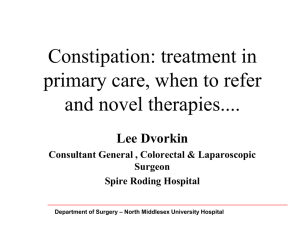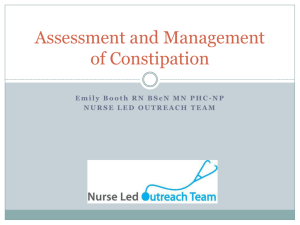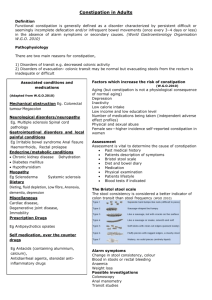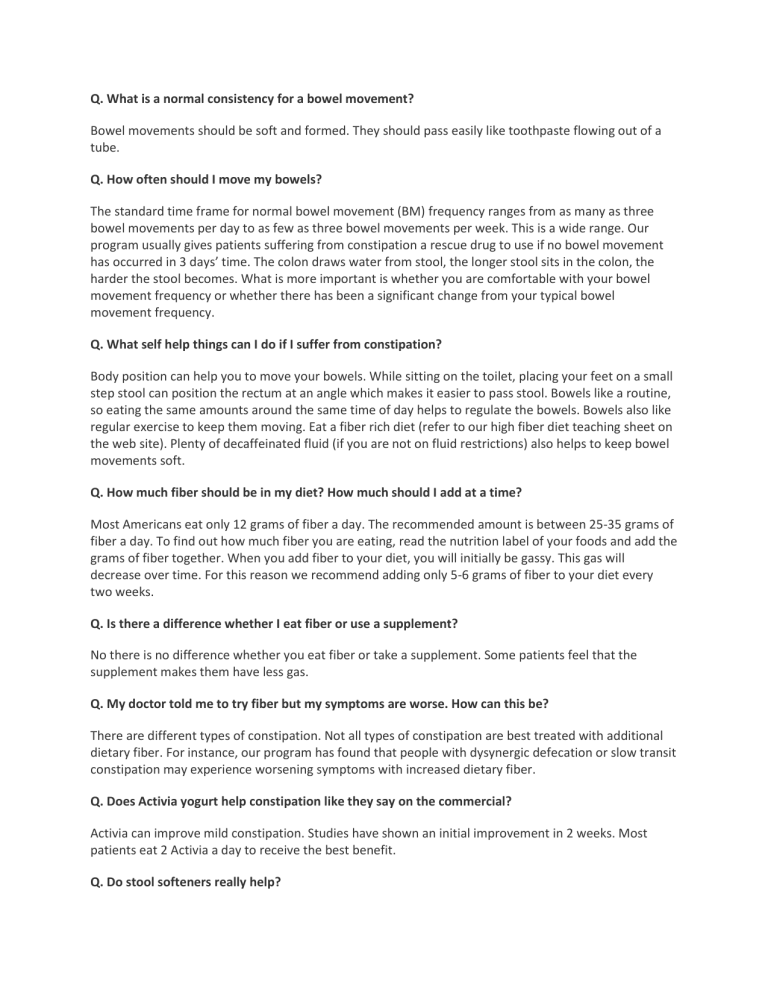
Q. What is a normal consistency for a bowel movement? Bowel movements should be soft and formed. They should pass easily like toothpaste flowing out of a tube. Q. How often should I move my bowels? The standard time frame for normal bowel movement (BM) frequency ranges from as many as three bowel movements per day to as few as three bowel movements per week. This is a wide range. Our program usually gives patients suffering from constipation a rescue drug to use if no bowel movement has occurred in 3 days’ time. The colon draws water from stool, the longer stool sits in the colon, the harder the stool becomes. What is more important is whether you are comfortable with your bowel movement frequency or whether there has been a significant change from your typical bowel movement frequency. Q. What self help things can I do if I suffer from constipation? Body position can help you to move your bowels. While sitting on the toilet, placing your feet on a small step stool can position the rectum at an angle which makes it easier to pass stool. Bowels like a routine, so eating the same amounts around the same time of day helps to regulate the bowels. Bowels also like regular exercise to keep them moving. Eat a fiber rich diet (refer to our high fiber diet teaching sheet on the web site). Plenty of decaffeinated fluid (if you are not on fluid restrictions) also helps to keep bowel movements soft. Q. How much fiber should be in my diet? How much should I add at a time? Most Americans eat only 12 grams of fiber a day. The recommended amount is between 25-35 grams of fiber a day. To find out how much fiber you are eating, read the nutrition label of your foods and add the grams of fiber together. When you add fiber to your diet, you will initially be gassy. This gas will decrease over time. For this reason we recommend adding only 5-6 grams of fiber to your diet every two weeks. Q. Is there a difference whether I eat fiber or use a supplement? No there is no difference whether you eat fiber or take a supplement. Some patients feel that the supplement makes them have less gas. Q. My doctor told me to try fiber but my symptoms are worse. How can this be? There are different types of constipation. Not all types of constipation are best treated with additional dietary fiber. For instance, our program has found that people with dysynergic defecation or slow transit constipation may experience worsening symptoms with increased dietary fiber. Q. Does Activia yogurt help constipation like they say on the commercial? Activia can improve mild constipation. Studies have shown an initial improvement in 2 weeks. Most patients eat 2 Activia a day to receive the best benefit. Q. Do stool softeners really help? Medications for the colon are specific to the person. Stool softeners are safe and relatively inexpensive, but work only for people with very mild constipation. Q. Will the chronic use of laxatives hurt me or become addicting? No, this is a myth. Some people will need to take something to move their bowels. Just like someone who needs to take medication for their stomach or for their heart. Q. What is the difference between osmotic laxatives and stimulant laxatives? Osmotic laxatives, such as Miralax or magnesium, are poorly absorbed substances that remain in the bowels and as a result pull water into the colon to make stools soft. Stimulant laxatives, such as Dulcolax and Senna, stimulate the muscles of the colon to squeeze or contract. As a result of this increased squeezing, the stool is pushed through the colon. The increase in muscle squeezing is why stimulant laxatives may cause abdominal cramping. Q. What does the Michigan Bowel Control Program (MBCP) do that is different from other programs? The MBCP is a multidisciplinary program designed for patients suffering from bowel disorders, meaning that doctors from different specialties see patients together to set a plan of care that is personalized to the individual patient. We coordinate appointments so patients are coming to us infrequently. We have nurse coordinators that help the patient from the moment they schedule their appointment until the patient is successful. We perform appropriate and timely testing. Q. Are our physicians board certified? Our Urogynecologists and Gastroenterologists are board certified. Q. Do you have a support group? The Michigan Bowel Control Program has an electronic communication board for patients enrolled in the program. You must sign a consent form giving us your e-mail address for this purpose. Q. Are there different types of constipation? There are four types of constipation: Diet and Medication Controlled Constipation: The colon moves stool along within 24 -72 hours. The muscles of the pelvic floor move properly. Usually, most people respond to fiber or laxative treatment. Dysynergic Constipation:The muscles of the pelvic floor do not work properly and may even perform the opposite function of what they are supposed to do. Sometimes muscles are in spasm. Patients usually complain of not being able to fully empty or having to use their fingers to pass stool. Dysynergic constipation may be coupled with an outlet obstruction. An outlet obstruction is where a structure such as a rectocele or enterocele is in the way of stool coming out. Slow Transit Constipation: The colon moves slowly, as a result, bowels move very infrequently sometimes only once every 2-3 weeks. Combined dysynergic and slow transit constipation. Q. What testing is appropriate to evaluate constipation? There are a variety of tests for constipation offered at the University of Michigan Medical Procedures Unit. Testing may include a colonoscopy, anal-rectal manometrics, the Smart pill wireless motility capsule or defecography. These are specialized tests that evaluate the colon for any structural problems or problems with muscle function that may be contributing to constipation. Q. How can physical therapy help constipation? If the muscles of the pelvic floor are not working properly, then physical therapy (PT) will help to retrain those muscles. We are not used to having to think about muscles of the pelvic floor. PT assists you in connecting the mind and body to enable these muscles to work properly when having a bowel movement. PT can also help with strengthening muscles and to decrease spasm. Q. Are there surgeries that can resolve my constipation? Surgery is always a last resort. Most constipation can be resolved with diet, lifestyle changes and laxative therapy. Surgery is recommended if you have a slow-moving colon that has failed all medical treatments or if you have a structure blocking the way that is causing your constipation. Structures blocking the way of stool moving through the anal canal can also be lifted by strengthening the pelvic floor through physical therapy.
